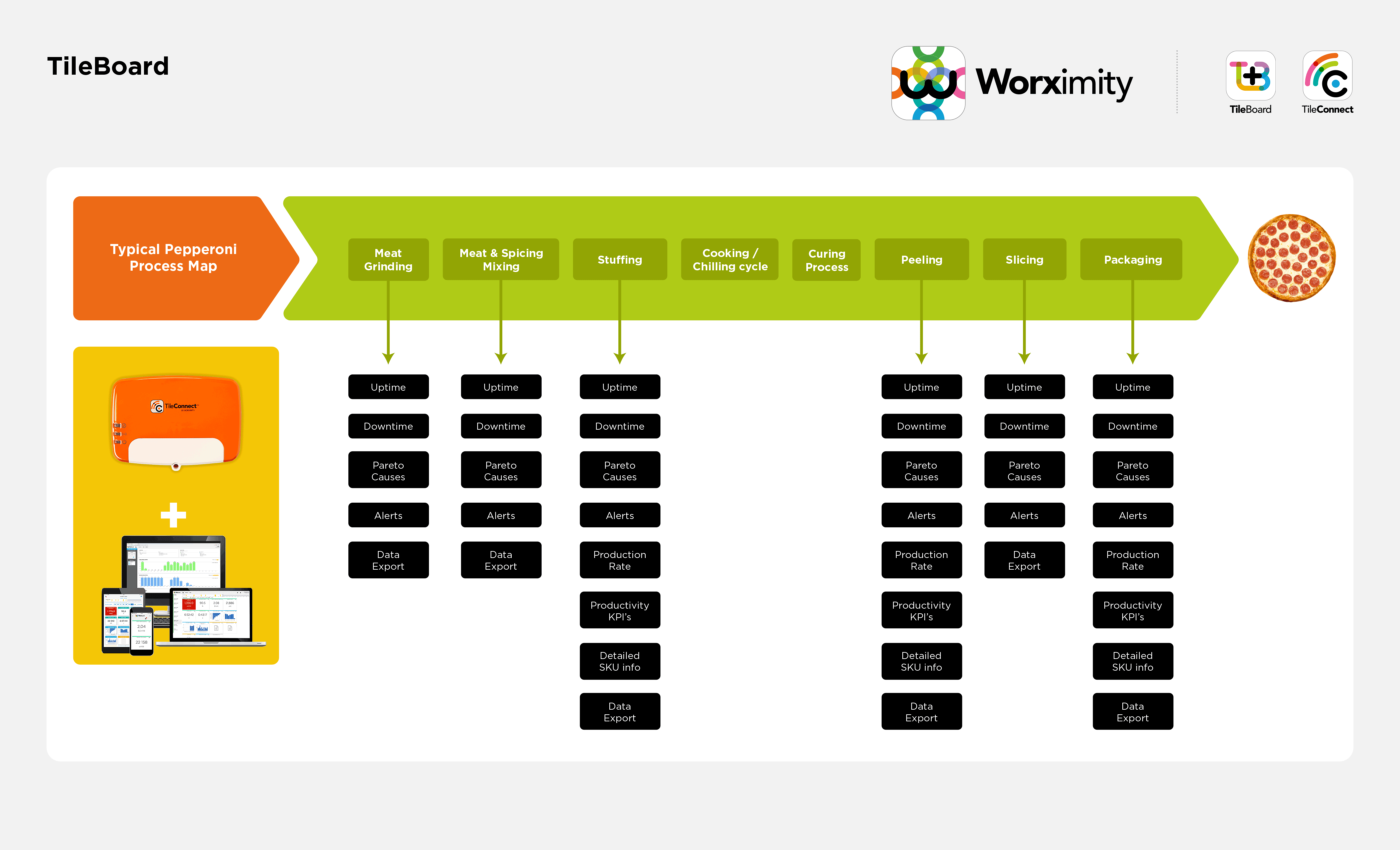Despite slower-than-usual growth caused by the COVID-19 pandemic, the global food and beverage market is expected to grow from $5943.8 billion in 2019 to $7527.5 billion in 2023. In 2019, 22 percent of this market came from North America—so competition in the food and beverage industry has been and will more than likely continue to be fierce.
Although it is possible to spend capital to purchase additional capacity, a better strategy for meeting the challenge of stiff competition is to increase the processing throughput of your existing production facilities. Worximity Technology partners with companies to help them do this by implementing Smart Factory analytics to form a foundation for Industry 4.0 manufacturing techniques. In addition, below are five near-term actions companies can take to improve their food and beverage processing capacity.
1. Eliminate Low-Margin or Unprofitable SKUs
Eliminating low-performing items frees up line capacity that can be used to increase production volumes for more profitable products. Producing low-margin items only consumes productive capacity that could be used for new or more profitable items.
2. Review and Revise Space Utilization and Process Flows
Effective space utilization and the elimination of unnecessary processing steps both frees up capacity and reduces production costs. Analysis of workflows and process steps often uncovers significant opportunities to capture unused or inefficiently used equipment.
3. Reduce Waste and Improve Quality
Examining line data collected by Smart Factory analytics software provides managers with a picture of the amount, type, and source of waste created during production. For example, overprocessing is often a source of excess waste that could be eliminated. Managers can prioritize areas of study if they have access to real-time process line data. Those lines producing the most waste can be studied first, leading to greater savings and increases in processing capacity.
4. Implement Preventative Maintenance Programs
Using data from Smart Factory analytics software, managers can understand the duration and sources of downtime—such as micro-stops—and can prioritize specific areas or process steps for study and improvement. For example, meat processing can involve lost time when a single grinding operation feeds multiple processing lines. Tracing the amount and cause of downtime can lead to changes in line balancing or altering product mix during processing. Identifying malfunctioning equipment can also redirect maintenance efforts to improve machine uptimes.
5. Review and Upgrade Employee Training
If they are going to contribute to ensuring production runs smoothly and defects are minimized, employees must be highly skilled and well trained. Tracking line effectiveness using Smart Factory analytics can pinpoint individuals in need of additional training or guidance. Talented and efficient employees not only produce quality products but also help reduce waste and improve quality. The result is all-around improvements, including increased processing capacity.
Implement Smart Factory Software to Support These Strategies
Tackling these five strategies with the support of Worximity’s Smart Factory digital management systems gives any company an advantage in rising to the challenge of the competition they face in the marketplace. Today, many processors have already adopted Industry 4.0 as an overall operating philosophy, and the improvements they have made show in price reductions and market penetration.
Worximity provides businesses with the kind of data they need to analyze their operations and improve processing capacity. Implementing a continuous improvement program using the output from this system supports the above strategies. This information gives companies the data they need to make decisions that quickly and effectively improve processing capacities.
Worximity’s Smart Factory analytics system is today’s premier approach to food processing cost reduction. First, we attach wireless data collection devices (TileConnect sensors) to line operating equipment. Our sensors capture real-time operating data—such as downtime, feed, and speeds—and send this information to the cloud. This data is then stored and analyzed by our Smart Factory analytics software. We customize the resulting output for each situation and processing facility. Output results are then displayed on monitors (TileBoard) located throughout the factory.
Important metrics such as downtime, OEE, quality, and other KPIs are presented in real time for all employees. Because of this visibility, the production team knows the status of processing at all times and can intervene should the need arise. Data gathered by the Smart Factory analytics software supports each of the above five strategies and accelerates benefits for any company’s continuous improvement program.
To help your company quickly respond to changes in competition as well as uncertainties arising out of the pandemic, Worximity is offering a free Guide to Improving Shop Floor Management with Smart Software. Use this guide to get your company started on the road to an Industry 4.0 manufacturing solution. To learn about how to implement the above capacity improvement strategies, connect with us today.

















